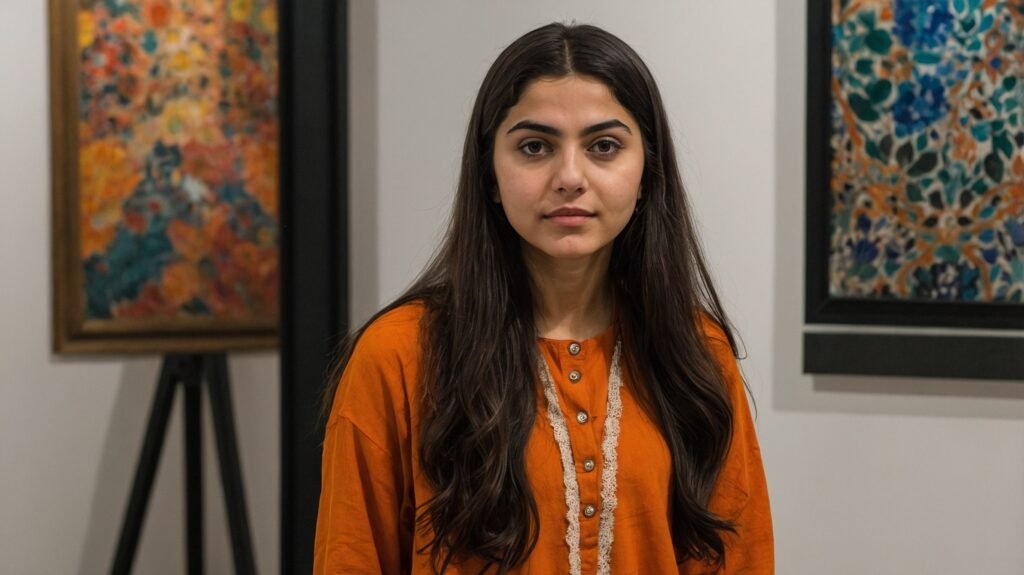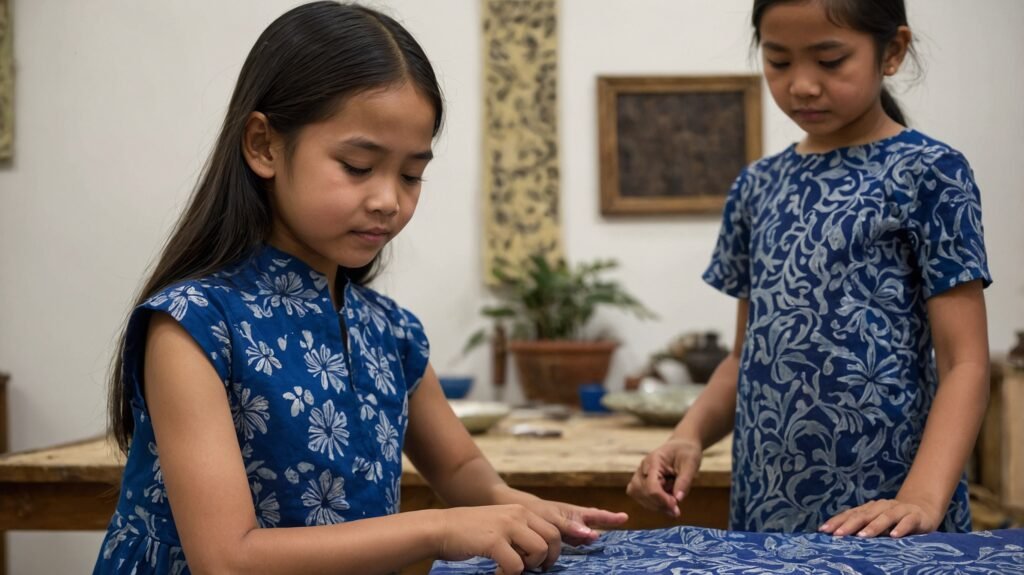Key Takeaways
- The fascinating history of natural dyes in fashion
- How synthetic dyes took over the fashion industry
- The eco-friendly appeal of natural dyes
- Uncovering the vibrant color palette of natural dyes
- Wardrobe staples that look amazing when dyed naturally
- How to incorporate natural dyes in your daily style
- The future of natural dyes in fashion sustainability
- The role of natural dyes in the slow fashion movement
In recent years, the fashion industry has experienced a major shift toward sustainable and eco-friendly practices. Among these changes, the renewed popularity of natural dyes in contemporary fashion stands out. This article explores the rich history, unique appeal, and vibrant colors of natural dyes, as well as practical tips on how to incorporate sustainable dyeing techniques into your everyday wardrobe.

The Captivating History of Natural Dyes
From the earliest days of ancient Egypt and Mesopotamia through the colonial era, natural dyes have experienced a remarkable evolution. These organic colorants were highly sought after throughout history, often considered more valuable than gold or silver.
The Ancient Significance of Natural Dyes
The rich reds, calming blues, and earthy greens dyed with natural substances were highly sought after in ancient times. Think of Cleopatra adorning herself in indigo-dyed garments. She wasn’t just making a fashion statement; she was embodying the power and wealth associated with these dyes.
The Colonial Impact on Natural Dyes
During the colonial era, countries such as India were heavily exploited for their rich natural resources, particularly natural dyes like indigo. As colonial powers exported these valuable natural colorants to meet increasing global demand, local cultures experienced a decline in the traditional use of natural dyes.
The Decline and Rise of Natural Dyes
Synthetic dyes revolutionized the textile industry in the 19th century, ushering in an era where vivid colors could be manufactured quickly and affordably. As a result, natural dyes faded into obscurity, but they have recently regained attention thanks to the growing demand for sustainable fashion and environmentally friendly dyeing practices.
The Transformation by Synthetic Dyes
Synthetic dyes, although convenient, come with a plethora of environmental drawbacks. They’re not only harsh on the environment but can also be abrasive on sensitive skin.
The Environmental Dilemma
The chemical processes involved in synthetic dye production often result in hazardous waste that pollutes waterways and harms aquatic life. Moreover, the energy consumption in this manufacturing is far from eco-friendly.
The Health Concerns
Synthetic dyes are also known to cause allergic reactions in some people. Ever wondered why that red blouse makes your skin itch? It’s likely the synthetic dye seeping into your skin.
Fast Fashion’s Reliance on Synthetic Dyes
The fast fashion industry thrives on the mass production of clothes, often relying on synthetic dies to keep costs low. This contributes to a vicious cycle of waste and environmental degradation, something that natural dyes could alleviate.

The Eco-Friendly Lure of Natural Dyes
Natural dyes come from sustainable sources like plants, minerals, and even some insects. They offer a green alternative to the otherwise chemically laden world of synthetic dyes.
- Environmentally sustainable
- Biodegradable
- Low in toxic waste
- Safe for the skin
- Rich, long-lasting colors
- Supports local economies
- Promotes biodiversity
- Encourages organic farming
- Enhances fabric longevity
- Boosts emotional well-being
The Color Palette of Natural Dyes
Think natural dyes, and a plethora of vivid colors come to mind: saffron yellow, beetroot red, and lavender blue, to name just a few. The depth and richness of these colors have a unique appeal, incomparable to the sometimes flat and artificial look of synthetic dyes.
The Charm of Indigo
Indigo offers a deep, absorbing blue that looks fabulous on jeans, shirts, and even formal wear. It has been a classic choice for centuries, recognized for its enduring vibrance.
The Appeal of Turmeric Yellow
Turmeric doesn’t just spice up your food; it also brings a vibrant yellow hue to your garments. When used in dying, turmeric offers a golden brilliance that is simply stunning to look at.
The Calm of Lavender
Lavender isn’t just a calming scent; it also provides a serene color to your wardrobe. The pastel shade adds a touch of femininity and is perfect for spring fashion.

How to Incorporate Natural Dyes in Your Style
You don’t have to revamp your entire wardrobe to make room for natural dyes. Even small steps can make a big impact. From choosing naturally dyed accessories to taking up DIY dyeing projects, the possibilities are endless.
Choosing The Right Brands
With the boom in sustainable fashion, many brands now offer naturally dyed clothing lines. Brands like Stella McCartney and Eileen Fisher incorporate natural dyes in their collections, making it easier for you to make eco-conscious choices.
DIY Natural Dyeing
For those who enjoy hands-on activities, creating your own naturally dyed garments can be both fun and rewarding. Simple items like scarves or T-shirts can be easily dyed using kitchen ingredients like coffee, tea, or onion skins.
Natural Dye for Special Occasions
Natural dyes are not just for casual wear; they can make a stylish statement at formal events too. Imagine wearing a naturally dyed dress to a wedding or a gala event. The rich colors can make you stand out while also being gentle on your skin.
The Future of Natural Dyes
Sustainability is not just a trend but a necessity, and the use of natural dyes is an important step towards greener fashion. With advancements in technology, we can expect to see more efficient methods of natural dye production, further cementing its place in the industry.
Market Trends
The market for natural dyes is expected to grow exponentially in the coming years, thanks to increased consumer awareness. Brands that make the switch to natural dyes are not just making an ethical choice but also a financially smart one.
Technological Advancements
The science behind natural dyes is continuously evolving. New methods are being developed to extract colors more efficiently, which in turn will make naturally dyed products more accessible to the general public.
The Influence of Social Media
Social media platforms have been instrumental in promoting the use of natural dyes. Eco-conscious influencers are educating the masses about the benefits, thereby inspiring more people to opt for naturally dyed clothing.

The Resurgence of Natural Dyes and Slow Fashion
As we lean towards sustainability, natural dyes find their true calling in the slow fashion movement. This entails a more thoughtful approach to fashion, focusing on quality over quantity and sustainability over convenience.
- Reusing and recycling garments
- Upcycling old clothes
- Supporting artisanal craftsmanship
- Renting instead of buying
- Minimalism in wardrobe choices
- Seasonless fashion
- Promoting fair labor practices
- Opting for timeless designs
Extending the Lifespan of Naturally Dyed Garments
Just like any cherished possession, clothes dyed with natural ingredients require special care to maintain their color and longevity. Here’s how you can do it.
Gentle Cleaning Techniques
Machine washing can be tough on naturally dyed fabrics, so it’s best to opt for hand washing or a gentle machine cycle. Use eco-friendly detergents to further reduce environmental impact and keep your garments looking vibrant for longer.
Air Drying
Whenever possible, air dry your naturally dyed garments to preserve the rich hues. Keep them away from direct sunlight to prevent color fading. Drying them in the shade will not only keep them looking fresh but also reduce energy consumption compared to using an electric dryer.
Storage Solutions
How you store your naturally dyed clothes can impact their lifespan. Instead of cramming them into a crowded wardrobe, give them ample space to breathe. Use padded hangers for delicate fabrics and keep them away from damp areas to avoid mold and mildew.

The Cultural Significance of Natural Dyes
Beyond fashion and sustainability, natural dyes hold immense cultural significance in various parts of the world. The art of dyeing has been passed down through generations, and each community has its unique style and technique.
Tribal Traditions
Many indigenous cultures have relied on local plants and minerals to dye their fabrics. These vibrant textiles tell a story, often symbolizing the community’s history, beliefs, and social structure.
National Pride
Certain countries have specific colors associated with them due to their abundant natural resources for dyes. For example, India is synonymous with indigo, while Japan is well-known for its exquisite range of natural hues like the Sakura pink.
Festive Celebrations
Natural dyes play a significant role in global festivals and celebrations. Think of the bright colors of Diwali garments or the rich tapestry of African prints during cultural festivities. These colors add an extra layer of meaning to the celebration.
Ethical Considerations in Natural Dye Usage
As the demand for naturally dyed products increases, ethical sourcing becomes a paramount concern. It’s essential to ensure that the raw materials used in these dyes are sourced responsibly.
Fair Trade Practices
When buying naturally dyed garments, look for fair trade certifications to ensure that the workers involved in the dyeing process are paid fairly and treated well. This ethical consumerism encourages better labor practices in the fashion industry.
Sourcing Locally
Natural dyes often come from plants that are native to specific geographical regions. Sourcing these materials locally can help boost the regional economy and reduce the carbon footprint associated with transportation.
Animal Welfare
Some natural dyes, like cochineal for reds, are derived from insects. If you’re concerned about animal welfare, opt for plant-based natural dyes or look for cruelty-free certifications when purchasing such items.

The Rise of Natural Dye Workshops and DIY Kits
With the burgeoning interest in sustainable fashion, there’s been a parallel increase in workshops and DIY kits dedicated to teaching the art of natural dyeing.
Community Workshops
Local artisans and sustainable fashion advocates often organize workshops where you can learn the basics of natural dyeing. These workshops not only equip you with a new skill but also foster a sense of community among like-minded individuals.
DIY Kits
For those who prefer experimenting at home, several companies offer DIY natural dye kits complete with all the necessary ingredients and instructions. These kits make it easier for you to bring your sustainability goals to fruition.
Educational Outreach
Schools and universities are incorporating natural dye projects into their art and fashion curricula. This helps raise awareness among the younger generation, planting the seed for future sustainable practices.
The Impact of Celebrity Endorsements and High-End Collaborations
Public figures have a substantial influence on fashion trends, and this holds true for naturally dyed clothing as well.
Celebrity Influence
When a well-known personality wears naturally dyed clothing, it immediately gains traction among their followers. The power of celebrity endorsements in increasing the popularity of natural dyes cannot be overstated.
Designer Collaborations
High-end fashion designers are increasingly collaborating with artisans skilled in natural dye techniques. Such partnerships bring a blend of traditional craft and modern design to the global stage, raising awareness about the benefits and beauty of natural dyes.
Fashion Shows and Red Carpets
Major fashion events and red carpets are becoming platforms for showcasing naturally dyed garments. As these exquisite pieces get snapped by photographers and shared across social media, it further propels the demand for sustainable fashion options.
Your Colorful Guide to Natural Dyes
| Dye Source | Color Produced | Region Known For This Dye | Lifespan | Ethical Considerations |
|---|---|---|---|---|
| Indigo | Blue | India, Japan | Long | Fair Trade, Local Sourcing |
| Turmeric | Yellow | Southeast Asia | Medium | Local Sourcing, Organic |
| Cochineal | Red | South America | Long | Animal Welfare |
| Henna | Brown | Middle East, North Africa | Medium | Fair Trade |
| Madder Root | Red-Orange | Europe, Asia | Long | Organic, Local Sourcing |
| Black Walnut | Dark Brown | North America | Long | Local Sourcing |
| Safflower | Pink, Yellow | Middle East | Short | Organic |
| Woad | Light Blue | Europe | Medium | Fair Trade |
Conclusion
Diving deep into the world of natural dyes is not just a journey through rich colors and sustainable choices. It’s also an exploration into cultural heritage, ethical fashion, and the positive impact we can make on the planet and its inhabitants. By understanding the nuances of natural dyes—from their origins and methods to their application in contemporary fashion—we empower ourselves to make choices that are not only visually appealing but also kind to the Earth and ethical in their creation. It’s a kaleidoscope of options that offers more than just a spectrum of colors; it offers a chance to weave a brighter, more sustainable future for all.

Frequently Asked Questions
What are the best natural dye sources for beginners?
If you’re just starting out, turmeric, beetroot, and onion skins are easy to work with and readily available in most kitchens.
Is it more expensive to buy naturally dyed clothes?
While it can be a bit more expensive due to the labor-intensive process, many find the extra cost to be justified by the benefits such as sustainability and unique color profiles.
How can I ensure the ethical sourcing of naturally dyed garments?
Look for fair trade certifications, and try to buy from companies that source their dyes locally or practice responsible harvesting.
What colors are hardest to achieve with natural dyes?
True blacks and bright purples are among the most challenging colors to create with natural dyes.
Do naturally dyed fabrics fade faster?
Naturally dyed fabrics can fade more quickly than synthetically dyed ones, but proper care can extend their lifespan.
How do I care for my naturally dyed garments?
Opt for hand washing or gentle machine cycles with eco-friendly detergents. Air drying in the shade is also recommended.
What is the cultural significance of natural dyes?
Natural dyes are deeply rooted in various cultures, representing traditions, historical events, and even social hierarchies.
Can I dye synthetic fabrics with natural dyes?
Natural dyes adhere best to natural fibers like cotton, wool, and silk. Synthetic fabrics like polyester are not ideal candidates.
Are natural dyes safe for sensitive skin?
Natural dyes are generally considered to be less irritating than synthetic ones, but it’s always a good idea to do a patch test first.
Are there workshops or courses where I can learn about natural dyeing?
Yes, many local artisans and sustainable fashion advocates offer workshops on natural dyeing. You can also find online courses and DIY kits for a more personalized learning experience.

Sam Goldman, with his intuitive grasp on the art of color selection, navigates the vibrant tapestry of fashion shades, ensuring each ensemble reflects the pulse of modern trends. His knack for crafting unique yet cohesive color combinations unravels the complexities of the fashion spectrum. Beyond being a mere sentinel, Sam’s dedication transforms every reader’s wardrobe journey into a harmonious blend of contemporary elegance and timeless allure. Dive into his writings and emerge with a refreshed perspective on fashion colors.
Reviewed By: Joanna Perez and Anna West
Edited By: Lenny Terra
Fact Checked By: Matthew Mansour
Photos Taken or Curated By: Matthew Mansour
